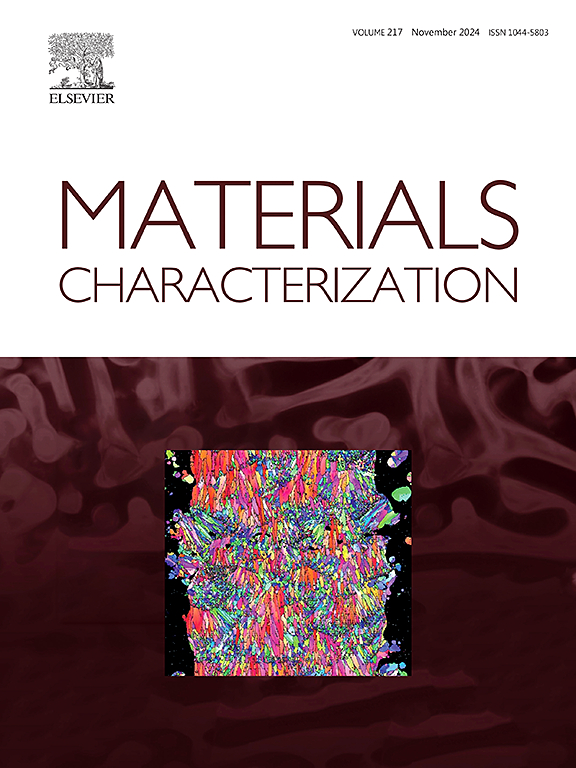Temperature-dependent tensile behaviors and strain localization of TC17 high temperature titanium alloys with bimodal microstructure
IF 4.8
2区 材料科学
Q1 MATERIALS SCIENCE, CHARACTERIZATION & TESTING
引用次数: 0
Abstract
TC17 (Ti-5Al-2Sn-4Mo-4Cr) titanium alloys are extensively applied under high temperature environment, necessitating a comprehensive understanding of their high-temperature mechanical properties and deformation mechanisms. In this study, we systematically investigated the temperature-dependent tensile behaviors and deformation features of TC17 alloys with representative bimodal microstructure using multiple measurement and characterization techniques. It is intriguingly found that the alloy ductility remains nearly unchanged as the tensile temperature is raised from 25 °C to 400 °C although normal softening occurs concurrently. This phenomenon in ductility is closely associated with a reduction in uniform plastic strain during tension, leading to premature necking at elevated temperatures. Microstructural characterizations indicate that plastic deformation predominantly occurs within αp-domain at ambient temperature, resulting in significant dislocation piling-up and even large crystallographic misorientations. However, as the testing temperature increases, this specific deformation gradually shifts towards the βtrans-domain, inducing pronounced deformation localization in the fashion of strain localization bands (SLBs). Since the bimodal microstructure comprises a soft αp-domain and a hard βtrans-domain, it can essentially be classified as a heterostructure, which potentially imparts back-stress work hardening to prevent necking and thus enhance global ductility at ambient temperature. However, elevated temperatures weaken the effect of back-stress working hardening while promoting deformation transition into the βtrans-domain, thereby activating strain localization and accelerating necking onset. These findings enrich our fundamental understanding on high-temperature mechanical behaviors of TC17 alloys, and also provide implicit guidance for advancing material performance at elevated temperatures.
求助全文
约1分钟内获得全文
求助全文
来源期刊

Materials Characterization
工程技术-材料科学:表征与测试
CiteScore
7.60
自引率
8.50%
发文量
746
审稿时长
36 days
期刊介绍:
Materials Characterization features original articles and state-of-the-art reviews on theoretical and practical aspects of the structure and behaviour of materials.
The Journal focuses on all characterization techniques, including all forms of microscopy (light, electron, acoustic, etc.,) and analysis (especially microanalysis and surface analytical techniques). Developments in both this wide range of techniques and their application to the quantification of the microstructure of materials are essential facets of the Journal.
The Journal provides the Materials Scientist/Engineer with up-to-date information on many types of materials with an underlying theme of explaining the behavior of materials using novel approaches. Materials covered by the journal include:
Metals & Alloys
Ceramics
Nanomaterials
Biomedical materials
Optical materials
Composites
Natural Materials.
 求助内容:
求助内容: 应助结果提醒方式:
应助结果提醒方式:


